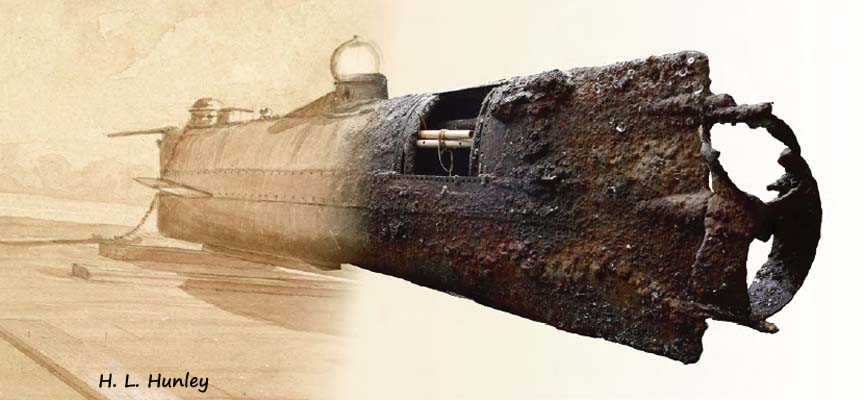
 |
|
|||||||
| Image of the Day Images that will blow your mind - every day. [Blog] [RSS] [XML] |
 |
|
|
Thread Tools | Rate Thread | Display Modes |
|
|
#1 | ||
|
The future is unwritten
Join Date: Oct 2002
Posts: 71,105
|
Feb 25th, 2017: H. L. Hunley
Feb 17th, 1864, The H.L. Hunley sank the USS Housatonic, changing the world by marking the beginning of submarine warfare.
 At the time the CSA had no surface ships except privateers, and the Union was blockading all the CSA’s ports. The south was running out of supplies and also cash because they couldn’t export cotton, tobacco, or sugar, for cash flow. Although the south had built several semi-submersibles they were’t very successful. Hunley and friends built three submersibles at their own expense. The first two designs wouldn’t work but the third seem to be operable. They tried engine power but human power seem to be the best route. They tried diving under the target dragging a torpedo behind but discarded that design. As soon as the third design seemed successful the CSA Army seized it, and manned it with their crew. Waiting at the dock for nightfall a steamer went by capsizing the sub which went down in 40odd feet of water killing the crew. Hunley and associates were called back to take over but on a test run she went to the bottom killing all eight including Hunley. The investigation claimed pilot (Hunley) error. The ballast tanks at each end were open at the top to the interior and Hunley forgot the close the seacock at his end.  Another crew of volunteers was assembled but General Beauregard ordered the Hunley to operate as a semi-submersible with a sparmounted torpedo. He later relented allowing fully submerged operation. It wasn’t a sneak attack, CSA deserters and spies told the US about the sub and all picket ships were warned to take precautions. Quote:
equivalent amount of steam, hence a pound of steam is equal to a pound of water.  They spotted the Hunley coming but by the time they realized what it was, it was too close to train a cannon on it. They responded with ineffectual small arms fire but before the ship could move, BOOM. Quote:
when the torpedo went off, which may be why it was never seen again. On 3 May 1995, a team of maritime investigators under the direction of novelist Clive Cussler made a remarkable discovery four nautical miles (7.4 km) off the coast of Charleston, SC, in 27 ft(8.3m) of water found the Hunley. With the site located outside of state waters, responsibility for its protection fell to the feds, eventually the U.S. Navy’s Naval Historical Center. The desire to study and preserve this unique artifact was clear, but such an ambitious project requires a significant investment of time, money, and ingenuity. But once discovered, the threat from potential looting was significant enough that recovery was the only way to guarantee preservation of the submarine.  This set off an operation complicated as a moon shot, and probably as expensive. Not only digging it out of the muck and recovering it, but finding a place and means to preserve it. They believed the contents would be still intact, and provide a wealth of information. A Collaborative Project of Naval History and Heritage Command, South Carolina Hunley Commission, and Friends of the Hunley, and a shitload of politicians, contractors, and volunteers. They not only recovered the sub and built the 46,000 sq. ft(4,274 m2), Warren Lasch* Conservation Center to preserve and study it. *Chairman of Friends of the Hunley, and wealthy from starting three trucking companies. The whole story is in a in a 16.1 MB, 321 page pdf. which differs from Wiki on some points.
__________________
The descent of man ~ Nixon, Friedman, Reagan, Trump. Last edited by xoxoxoBruce; 02-24-2017 at 11:08 PM. |
||
|
|

|
 |
| Currently Active Users Viewing This Thread: 1 (0 members and 1 guests) | |
|
|